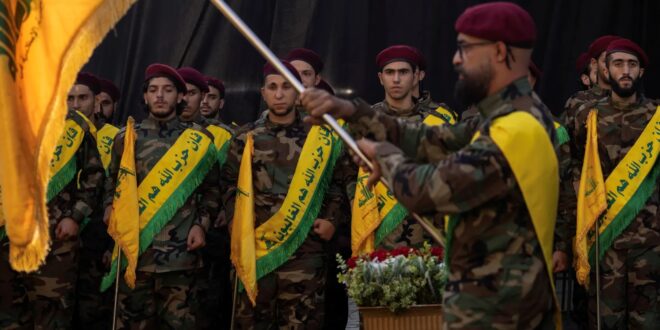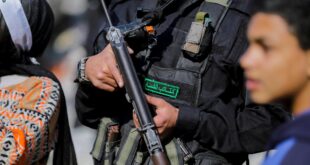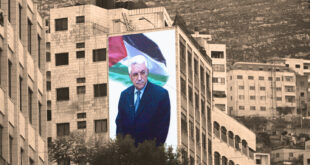To Defeat Iran’s Resistance Axis, the IDF Needs a New Strategy—and a Unified Country
In the weeks since late July, when Hamas leader Ismail Haniyeh was assassinated in Tehran and Hezbollah senior commander Fuad Shukr was killed in Beirut, there has been much speculation about the eruption of a wider conflict in the Middle East. According to this view, if Iran and Hezbollah choose to retaliate through major direct attacks on Israel, they could transform Israel’s current campaign in Gaza into a regional war. In this scenario, Israeli forces would then be engaged in high-intensity fighting on multiple fronts against multiple armed groups, terrorist militias, and a nuclear-threshold state’s military equipped with a huge arsenal of long-range missiles and drones.
In some ways, this wider regional war is already at hand. From the outset, “the Gaza war” was a misnomer. Ever since Hamas’s heinous October 7 attack nearly one year ago, Israel has faced not one but numerous antagonists in what has already become one of the longest wars since Israel’s founding. The day after Hamas’s assault from Gaza, Hezbollah began attacking Israel from Lebanon, declaring that it would continue its attacks as long as the fighting in Gaza continued. Shortly thereafter, the Houthis in Yemen also joined in, launching continual attacks on international shipping in the Red Sea and the Arabian Sea and launching missiles and drones at Israel, including one that exploded in central Tel Aviv.
Meanwhile, Shiite militias in Iraq, and sometimes Syria, have also menaced Israel with drones and rockets. And in mid-April, after Israel carried out a deadly airstrike near an Iranian diplomatic complex in Damascus, Iran retaliated by launching more than 350 ballistic missiles, cruise missiles, and drones at Israel, creating a new precedent for direct and open combat between the two countries. At the same time, Iran has been flooding the West Bank with funds and weapons to encourage terrorist attacks against Israel and undermine security within Israel itself.
Nonetheless, so far, this multifront war has been of limited intensity. If Israel or its enemies decide to escalate on any of the other fronts, it would have profound implications for Israeli security and strategy. Not since the 1973 Arab-Israeli war has Israel waged a full-fledged war on multiple fronts simultaneously. Nor has it faced a major offensive from another regional power. For decades, Israel has instead concentrated on addressing the threat of nonstate armed groups. Since its establishment in 1948, Israel’s security concept has been based on short wars on enemy territory—an approach that allows it to maximize its military punch and compensate for its basic disadvantages: its small territory and population, as well as its lack of strategic depth and domestic resources to support protracted campaigns.
Nearly a year of high- and medium-intensity fighting in Gaza and limited-intensity fighting on the northern border with Lebanon has severely strained this paradigm. Years of political turmoil within Israel itself have jeopardized the country’s strength. If Iran, Hezbollah, and other Iranian-backed groups move toward high-intensity warfare on other fronts as well, it will be paramount for Israel to put its security strategy on a stronger footing. To triumph in a true multifront war, Israel will have to combine all the tools of national power—political, military, economic, technological, informational, and diplomatic—with the vital help of allies and partners. And it will need to find new ways to endure in a longer, intensive fight. Israel’s political-military leadership will need to look ahead to an even more dangerous future but also learn from Israel’s own early history—when, with far more limited military resources, it often faced multiple aggressors at once and prevailed.
A SEVEN-FRONT WAR
From the beginning, Israel’s current war has been unlike any of its predecessors of recent decades. The day after Hamas’s barbaric and murderous October 7 assault—in which the group killed more than 1,200 civilians and soldiers and took more than 200 hostages—Israel formally declared war for the first time in 50 years. From the outset, it was clear that this war would be different from Israel’s previous operations in Gaza. To remove the threat and prevent such attacks from being repeated, it needed to destroy Hamas’s terror army, end its control over the Gaza Strip, and prevent its rearmament and resurgence in the future.
To achieve these difficult tasks, Israel must dismantle Hamas’s army units and governing bodies; destroy its armaments, production sites, tunnels, and command posts; and degrade Hamas’s fighting force. It must also safeguard Gaza’s borders in the long term, in coordination with Egypt and other partners. And at the same time, Israel has also had to try to prevent other members of Iran’s “axis of resistance,” such as Hezbollah and the Houthis, from fully joining into the war.
As Israel’s offensive unfolded, the country soon found itself contending with seven fronts across the Middle East. In Gaza, Israeli forces combined airstrikes and ground maneuvers to dismantle Hamas’s army units and establish freedom to operate. Along the northern border with Lebanon, they began defensive operations against Hezbollah, which had begun regular missile, drone, and rocket attacks into Israel. Over the following months, Israel also undertook targeted operations against senior Hamas and Hezbollah figures across Lebanon, including in Beirut. Over time, Israel carried out strikes in Iran and Yemen, conducted counterterrorism operations in the West Bank, and targeted Iranian-backed groups and advanced weapons sites in Syria. Assisted by the United States and other partners from the region and the West, Israel has also been able to deploy impressive multinational and multilayered air defenses against threats from all directions.
Despite considerable military successes, the war has come with high human, economic, and political costs. After nearly a year of fighting, Israel needs more weapons, ammunition, and spare parts. In the short term, this means relying more on the United States; in the medium and long term, it will require much higher investment in defense. Since the October 7 attacks, the IDF has also lost over 700 troops, and thousands more have been wounded. The burden on reservists is already heavy. Against this background, there are growing calls to recruit additional segments of Israeli society into the army, in particular the ultra-Orthodox, who are mostly exempt from service and staunchly oppose any new requirement.
To these existing challenges, a full-scale regional war would add new pressures and even higher costs. To prepare for that, Israel needs to undertake a larger rethinking of its security strategy, one that in some ways revives the approach it followed in the early decades of its existence.
“THE CASE OF EVERYTHING”
As the war in Gaza threatens to become a high-intensity regional conflict, it marks a return to the threat posed to Israel during its foundation and through its early decades. In those years, Israel repeatedly fought against a coalition of Arab forces. The IDF of that time was built around, and prepared to deal with, what was known as the “case of everything”—a situation in which the country was attacked simultaneously by multiple enemies on multiple fronts.
With its comparatively small population and territory, the fledgling state of Israel was surrounded by regular armies belonging to significantly larger Arab countries. The key to its defense, therefore, was the ability to hold off enemy offensives with its small regular forces; quickly mobilize its larger reserve forces; move to the offensive, if possible, on enemy soil; win decisive victories by gaining local superiority, one front at a time; and bring about the defeat of the combined enemy armies, in a brief time. Given the disparities in human and military potential between Israel and its enemies, Israel’s general security concept also tended to emphasize short and decisive wars, fought in enemy territory. By maximizing Israel’s military effectiveness while lowering the risk to Israel’s home front, these kinds of wars played to the IDF’s strengths and allowed the country to quickly return its economy and society to normal.
To enable this strategy, this unwritten security concept was built on three pillars: deterrence, early warning, and decisive victory. (Subsequently added to these were two additional pillars: protection/defense and the imperative of seeking support of a major power.) Deterrence meant using Israel’s formidable record of victories (and enemy defeats) to dissuade any antagonist from attacking the country. Early warning enabled the quick call-up of reserve forces‚ thus allowing Israel’s large pool of citizen-soldiers to continue contributing to the economy and society until mobilized for active duty. On the military level, it also gave the IDF the capability to quickly surge its order of battle. Decisive victory sought to remove any existing threat and further bolster deterrence.
Many of the assumptions underlying Israel’s existing security doctrine have been contradicted.
The strategy was successful. In the 1948 War of Independence, after nearly two years of fighting, Israel overcame the combined armies of six Arab states and the Palestinian forces. In 1967, Israel again took on the multipronged Arab threat, defeating the armies of Egypt, Jordan, and Syria, plus the air forces of Iraq and Lebanon in the Six-Day War. And in 1973, Israel repulsed and defeated Egypt and Syria after their surprise Yom Kippur offensive.
Precisely because of that success, however, the threat of national armies joining forces against Israel receded. Egypt and Jordan signed peace treaties with Israel, and with the collapse of the Soviet Union, the Arabs’ major patron, followed by the U.S. invasion of Iraq and the so-called Arab Spring, the relative strength of other states weakened. After 1973, Israel never faced an Arab coalition again. Instead, it fought mainly against nonstate terrorist organizations, including Hezbollah and Palestinian groups in Lebanon; Hamas, Palestinian Islamic Jihad (PIJ), and other organizations in Gaza and the West Bank; and global Jihad groups, such as al Qaeda and the Islamic State (also known as ISIS), across the region. Those enemies were indeed sponsored by regional powers such as Iran and Iraq, but except in the 1991 Gulf War, when Iraqi dictator Saddam Hussein launched ballistic missiles at Israel, direct fighting between Israel and those countries has been avoided, except with Syria in and over Lebanon.
Meanwhile, the ballistic arms threat to Israel’s home front, demonstrated by Iraq’s missiles and rockets, encouraged Israel to add the protection pillar to its security concept. In the past two decades, it has developed multitier missile and rocket defenses, including the Iron Dome, David’s Sling, and Arrow systems—and new laser systems are in development. Over the years, Israel focused its defense efforts on nonstate enemy groups, adapting some of its original pillars of defense to contend with these weaker but also subconventional enemies. For example, early warning systems have been used far more often to sound alarms about terror attacks rather than enemy invasions.
At the level of military strategy, IDF planners sought to maintain the ability to simultaneously defend Israel from multiple potential attackers while conducting a decisive offensive operation against a single one. In this regard, starting in the early years of this century, Israel viewed the primary land front as southern Lebanon, where Hezbollah, the most heavily armed nonstate group in the region, was based. Hamas in the Gaza Strip was viewed as secondary, while Iran, sharing no border with Israel, was a unique theater. The working assumption of Israeli strategists was that when war comes, dealing with Hamas could wait until Israel had achieved a decisive victory in Lebanon.
THE END OF SHORT WARS
In the current war in Gaza, the inadequacy of the existing security framework has become clear. First, on October 7, 2023, Israel fell short on implementing three of the four pillars: its deterrence proved ineffective, its early warning systems failed, and its feeble ground defense collapsed before the massive Hamas invasion. Equally important, as the war has unfolded, many of the principles and assumptions underlying the existing security doctrine and planning have been contradicted: Israel is fighting a war that began on its own soil, and its border communities in the north and south have been displaced; the primary front has been in Gaza, against Hamas, not Lebanon, the stronghold of the much more formidable Hezbollah; Israel has chosen a long war rather than a short one; and multiple enemies backed by Iran have joined in, including Iran itself, a major regional power.
Following its concept of decisive victory, Israel has set out to defeat Hamas’s terrorist army. After nearly a year, it has made significant advances toward this goal, demonstrating high intelligence and operational capabilities, fiercely fighting in densely built-up areas, above and below ground. Most of Hamas’s army units have been defeated and dismantled, most of its rocketry and production sites have been destroyed, and more than half its forces—at least 17,000 out of an estimated total of 30,000 fighters—have been killed. Yet Israel is still a long way from eliminating the threat, with Hamas already showing signs of resurging, recruiting new members to its ranks and stubbornly maintaining its grip on the ground.
In the past, Israel has been acutely aware of short domestic and international time horizons—“sand dials”—for its military campaigns and has therefore sought to rapidly maximize gains before being pressed to stop by the United States and other powers. By contrast, the prolongation of the current war, partly by Israel’s choice, has imposed high costs on its army, society, and economy. The wide devastation of the Gaza Strip and the large civilian casualties reported by Hamas are undermining Israel’s reputation and standing, provoking increasing international criticism and initial punitive steps. The long war since October 7 has underscored, by its own liabilities, the importance of Israel’s preexisting principle favoring short wars.
If the war becomes wider as well as longer, existing security assumptions will be even further challenged. In an all-out regional war, Israel would be fighting not only terrorist armies and militias sponsored by Iran but also Iran itself. Together, these enemies would be attacking Israel from Gaza, the northern border, and the West Bank, as well as from afar—from the east and south. Just as it took several wars and many decades for Israel to vanquish the threat of Arab coalitions, victory over the Iranian axis would require a prolonged struggle.
THE COMING STORM
A broader war would be far more devastating than anything seen so far. Iran and the axis would likely act with far more operational coordination. Axis forces would also likely attack U.S. forces in the region, as well as Jordan and Gulf states such as Saudi Arabia and the United Arab Emirates. At least on a political and logistical level, China and Russia might be drawn in as well, thereby opening up another active theater of their great-power competition against the West.
Israel, on the one hand, and Hezbollah, Iran, and perhaps others, on the other, would draw on a far greater range of capabilities, including weapons that haven’t yet been employed. The pace of attacks would also grow exponentially. Over the past 11 months, Hezbollah has launched over 7,600 rockets at Israel, and Israel has attacked more than 7,700 Hezbollah targets in Lebanon. In an all-out war, that scale of exchanges could take place within a few days. Combined with thousands of ballistic missiles, cruise missiles, and drones fired by Iran, Hezbollah’s vast arsenal would significantly challenge Israel’s air defenses. In addition, Israel would likely stage a ground offensive into Lebanese territory and Hezbollah would attempt cross-border operations into Israel. Iran’s militias would be expected to attack Israel from both Lebanon and Syria, and if they succeeded, through Jordan.
The nature of Israeli and enemy casualties would also change. Apart from combatants, casualties in the war so far include the civilian population of Gaza, which Hamas has used as human shields, and of the border areas of Israel and Lebanon. The Houthis’ attacks in the Red Sea have also diverted international shipping, resulting in significant economic hits to Egypt and Jordan but relatively few casualties. In a broad war, the human cost would likely expand to wider parts of the population in the warring countries and territories, and there would be far greater damage to population centers and national infrastructure, including vital energy and oil facilities.
The IDF needs 15 additional battalions to address current and pending missions.
The sheer number of actors would create a tumultuous maelstrom of its own. Just as the decision of a secondary actor in Iran’s axis, Hamas, sparked the current chain of events, the insertion of additional players directly into the war, including militias in Iraq and Syria, as well as Hezbollah, will make it even more difficult to anticipate and steer the unfolding conflict. The added complexity of both multiple enemies and partners will also make it harder not only to formulate and implement a common strategy but also to control escalation and bring the war to a close.
In all these issues, conserving military and economic resources will be vital. With multiple threats along Israel’s borders, the IDF may be required to operate in Lebanon, Gaza, the West Bank, and perhaps Syria, even as it continues to secure its peaceful borders with Egypt and Jordan. Manpower will be in even higher demand. Critical voices within Israel have decried the fact that in previous years the government faced budget shortfalls that resulted in large cuts in Israel’s defense budget, shutting down tank brigades, air squadrons, and other units. Now, Israel’s military leaders say that the IDF needs 15 additional battalions, or about 10,000 soldiers, to be able to address current and pending missions, including the ability to carry out simultaneous offensives on several fronts. As of now, IDF land forces that are deployed in Gaza will be needed in Lebanon if the war expands, and already hard-pressed reservists will be required to shoulder an even heavier burden.
Israel’s endurance is becoming as important as its ability to throw a decisive military punch. The IDF has been optimized for very high-intensity clashes lasting several weeks. In the current prolonged war situation, Israeli forces require not only more manpower and battle formations but also far greater stocks of weapons, ammunition, and spare parts. For now, Israel has been able to obtain increased supplies from the United States, but in the medium and longer terms, it will need to significantly raise its defense budget and expand its defense industries. The Israeli economy has already been significantly affected by the war, including credit rating downgrades and supply chain disruptions. Small businesses and the high-technology industry have also had to deal with owners and workers being mobilized for many months. These effects will only soar in a large-scale regional war, with the potential for significant enemy strikes on Israel’s home front.
TUNNEL VISION
Up to now, the Israeli government has continued to focus on its goals in Gaza: defeating Hamas, removing the threat it poses, and bringing the hostages home. In regard to the war’s other theaters, the government’s main directive has been only to avoid escalation and prevent actions that would interfere with the main effort in the south. Despite mounting attacks from multiple fronts, Israel has not yet formulated a comprehensive strategy to deal with this broader complex of challenges across the full theater of war. Take the northern border: although Israeli leaders have paid lip service to securing the area and allowing displaced civilians to safely return home, the government has yet to adopt this goal as a formal war objective.
Compounding the problem, the Israeli government has largely failed to address the legal and political dimensions of the war. The more the war is prolonged, the more Israel faces political isolation and questions about the legitimacy of its operations, even as negative international views of the enemy camp—between Gaza and Tehran—remain fairly stable. One reason for this is that the Israeli government has refused to articulate any positive vision for the “day after” the war beyond Hamas’s defeat. In a broad regional conflict, this problem could be extended to other arenas as well: especially in Lebanon, it will be crucial for Israel to have a clear end game and explain how it will shape relations and security architectures throughout the Middle East, having Iran’s threats in mind.
It is urgent for Israel to recognize the full extent of the strategic challenge it faces. Even if Hamas surprised its axis partners with the timing of its October 7 attack, the current war, and the regional war that could soon follow, must be seen in relation to Iran’s larger, long-term project to bleed out and destroy Israel. Iran and its allies have already shown increasing brazenness in their willingness to attack Israel. They have brandished new weapons systems—including missiles, drones, and advanced antitank missiles—that pose a serious threat to Israel, and they have implemented an array of fighting strategies—tunnel warfare, fighting from among civilian populations, and information and legal warfare—that make it difficult for Israel to maximize its relative strengths. Moving to a high-intensity war would be another major step in the axis campaign.
To contain this broader threat, Israel can no longer rely on raw military strength alone. It must use all the various tools of national power as well as the help of allies and partners—perhaps even of a coalition of forces. Such support would make it possible for Israel to mitigate some of its vulnerabilities, including by offsetting combined enemy resources and compensating for the lack of strategic depth. The potential of a coalition approach was forcefully demonstrated by Israel and its partners’ resounding defeat of Iran’s missile and drone attack in mid-April.
At the center of such a coalition must be the United States, which leads the security architecture of the Middle East alongside like-minded countries and regional partners. Israel’s relations with neighboring countries will also greatly benefit from normalization with Saudi Arabia, but such a step would require significant progress on Israeli-Palestinian relations. Nonetheless, Israel’s strategic relationship with Washington is and must remain a central pillar of its national security. In the event of a large-scale regional war, this relationship will be even more critical.
THE EIGHTH FRONT
With Iran as the core of the axis of resistance and Hezbollah the most serious military threat on Israel’s borders, Israel’s strategy must deal with the threats in the order of their severity and urgency. First, Israel should seek to end the war in Gaza and transition its fighting there to a long campaign. At this point, this is mostly a political step, since military operations have already become more limited. Of course, Israel will need to continue fighting Hamas and seeking its enduring defeat, but that can happen after the release of the hostages.
Gradually, with assistance from international organizations and Arab states, an alternative Palestinian regime must replace Hamas in Gaza, perhaps one area at a time. To prevent Hamas from taking over the West Bank, Israel should stabilize the territory by supporting accountable governance, supporting the economy, and promoting the rule of law, both through its own police and the security forces of the Palestinian Authority. And Israel should advance enabling conditions for resolving the conflict in the long term while avoiding steps that would lead to annexation of the West Bank and a one-state reality.
Years of political turmoil within Israel have jeopardized the country’s strength.
Sooner or later, Israel will also have to address the Hezbollah threat in Lebanon, preferably by diplomacy but more probably by war. Optimally, it would do this by means of a carefully planned, preventive attack at a time of its choosing rather than by an uncontrolled escalation or deterioration of the current fighting. Until it is possible to take such a step, Israel should strive to end the fighting in Lebanon and distance Hezbollah from the border through diplomacy, but with no illusions that this will solve the problem. If it becomes clear that Hezbollah is preparing for a major attack on Israel, it would be wise for Israel to consider another preemptive strike, but this time with much stronger signaling, including lethal force against a broader range of targets.
Israel will also have to continue to disrupt Iran’s efforts to arm its proxy forces and its pursuit of nuclear weapons. This will require stronger cooperation with Israel’s partners, including, foremost, the United States, but also other like-minded countries in the West and the region. And to truly end the threat posed by the Houthis to international interests will require a collective approach that tackles the problem at its source: by addressing the supply chain that is funneling Iranian support and weapons technology to the Houthis and by weakening the Houthis’ power in Yemen by reinforcing their competitors.
To win a long-term, intensive multifront war, Israel would have to increase defense budgets; open new production lines for munitions; harden its critical national infrastructure, such as energy and communication; and expand the IDF’s pool of recruitment to additional parts of Israeli society. Most critically, however, it will have to resolve the country’s political crisis, which has undermined its resilience, encouraged its enemies, and prevented Israel from developing the broader strategy it needs. The war’s most vital front is the eighth one: the home front. Israel’s national security begins at home, and until the government can pull its divided house together and restore Israeli unity, it will be impossible to restore security and peace in Israel and in the region.
 Eurasia Press & News
Eurasia Press & News




